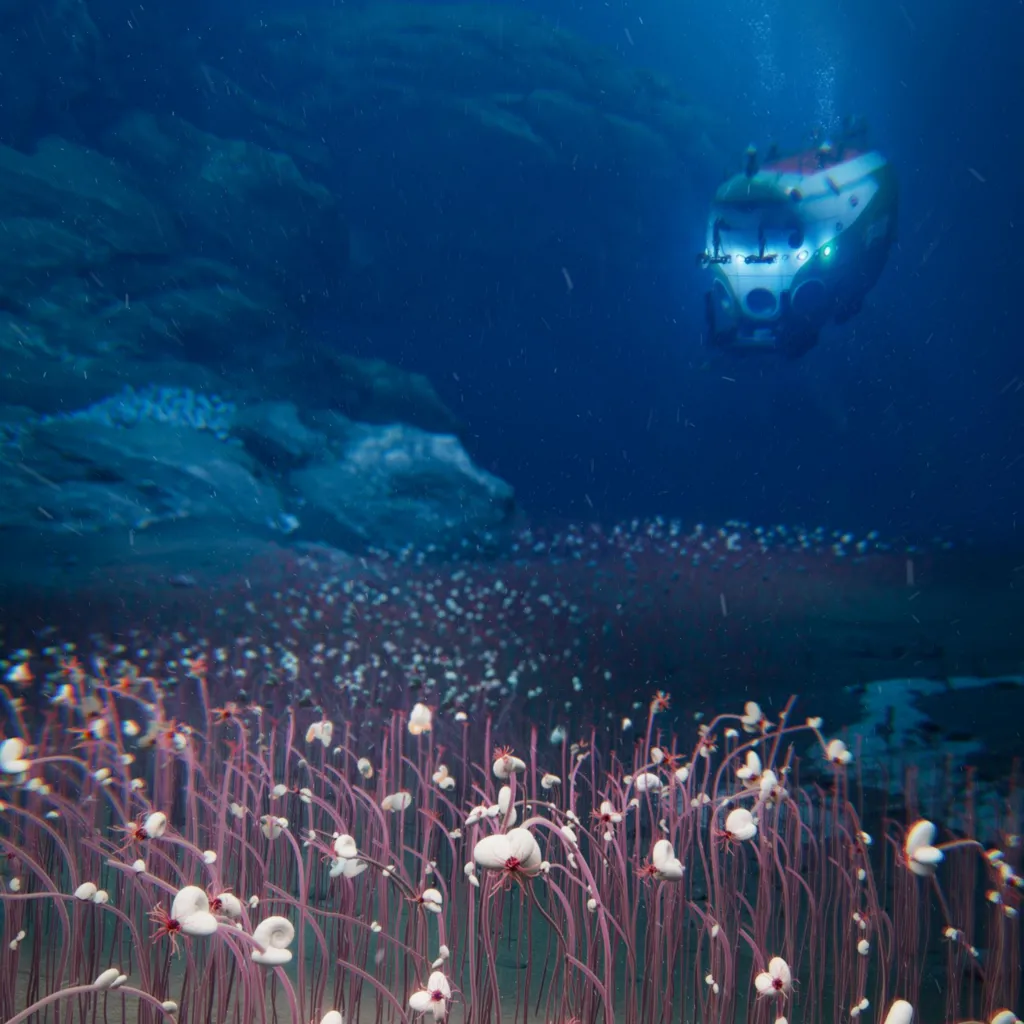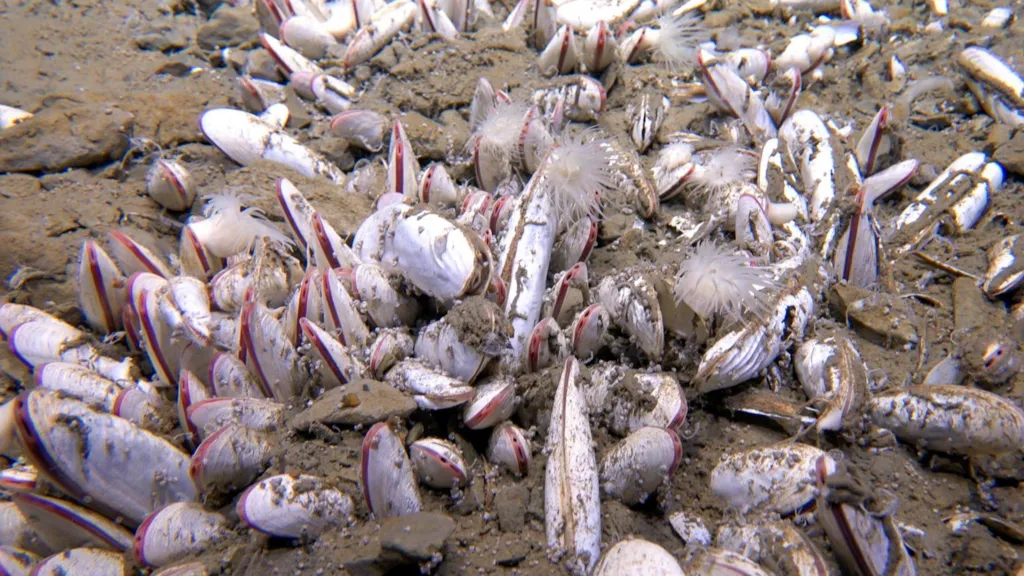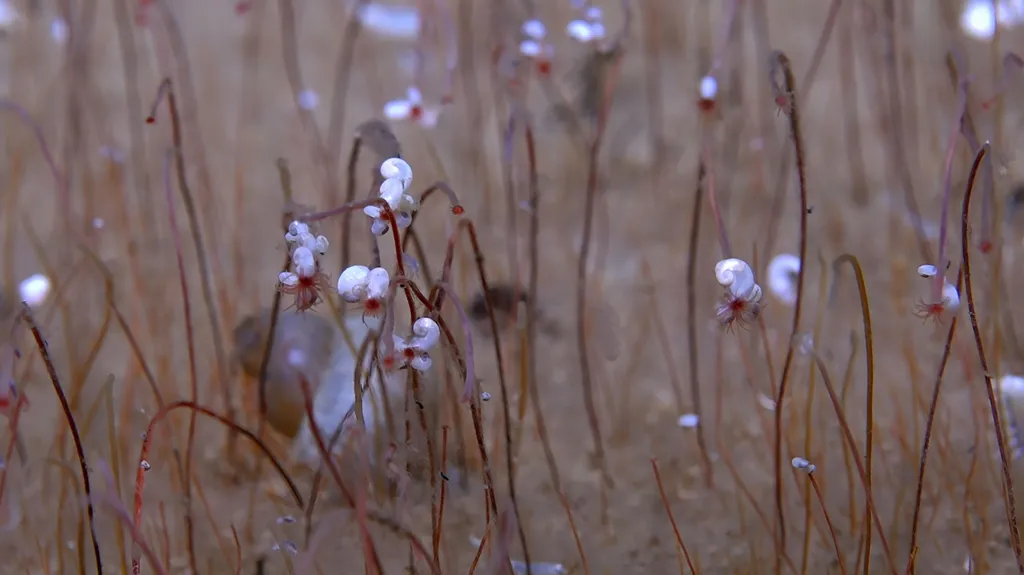A Hidden World 9,000 Meters Below: Scientists Discover Thriving Ecosystems in the Deepest Ocean Trenches
Most people imagine the deep ocean as a cold, lifeless abyss. But a recent groundbreaking expedition has shattered that image—revealing vast fields of tube worms, carpets of clams, and mats of strange bacteria thriving nearly 10 kilometers beneath the surface of the sea.

Led by a team of deep-sea researchers from the Chinese Academy of Sciences, the mission dove into some of Earth’s most unexplored territory—the ocean trenches of the northwest Pacific. Their findings may forever alter how we understand life’s ability to thrive under pressure.
A Submersible Journey Into the Unknown
The research team traveled in Fendouzhe, a deep-sea submersible capable of descending to depths exceeding 10,000 meters (over 6 miles). Over the course of the expedition, the scientists navigated more than 2,500 kilometers of underwater terrain, reaching record-setting depths of up to 9,533 meters—regions of the ocean that until now have remained almost completely unexamined by humans.

Dr. Xiaotong Peng, one of the lead scientists on the project, described the descent into the deep trench as both surreal and inspiring:
“It’s exciting—especially for a deep-sea scientist—to go to a place human beings have never explored. What we saw was quite amazing.”
And what they saw was not barren ocean floor, but instead lush ecosystems teeming with alien-like lifeforms.
Tube Worm Forests and White-Spiked Shrimp
From the thick, reddish-brown tubes of giant worms to fields of pinkish-white clams, the landscape unfolded like something from a science fiction novel. Under the dim lights of the submersible, scientists captured images of long, sinewy tube worms, some stretching 30 centimeters from the seabed, as well as colonies of Macellicephaloides grandicirra, shrimp-like creatures covered in white spikes.
These marine animals live in complete darkness, subjected to crushing water pressure and icy cold. Yet, against all odds, they flourish.
Dr. Megran Du, another leading scientist on the team, explained:
“They must have a trick to adapt to life in such extreme high pressure. That’s another question we need to answer.”
Life Without Sunlight: Fueled by Chemicals
What powers these deep-sea communities if sunlight can’t reach them?
Instead of relying on photosynthesis, these organisms survive through a process known as chemosynthesis. They tap into chemical-rich fluids that seep from cracks in the seafloor—substances like hydrogen sulfide and methane that ooze from the Earth’s crust.
These chemical compounds serve as a kind of fuel for life, sustaining bacteria and other microorganisms that form the base of this unique food chain. In turn, more complex creatures like clams, worms, and shrimp depend on these microbes for energy.
What’s even more astonishing is the abundance of life observed at these depths. Far from being isolated anomalies, these ecosystems seem to be more widespread than previously believed.
A Scientific Breakthrough in the Deepest Trenches
Until now, the deepest recorded vertebrate life was a small snailfish filmed in 2023 at a depth of 8,336 meters. But this new expedition has extended the boundaries of known life even further—challenging long-standing assumptions that few organisms could survive at such crushing depths.

The findings, published in Nature, may signal the beginning of a new era of deep-sea research. Scientists are now hoping to better understand how these creatures convert toxic chemicals into usable energy, and how their bodies endure extraordinary pressure levels that would crush most other forms of life.
The Bigger Picture: Rethinking Earth’s Biosphere
These discoveries aren’t just about exotic marine life. They hint at the incredible adaptability of life itself—offering potential clues about how organisms might survive in extreme environments elsewhere in the universe.
If life can thrive in such hostile conditions on Earth—completely devoid of sunlight, buried under kilometers of water, and relying solely on chemical energy—then the possibility of life in similar conditions on other planets or moons becomes all the more plausible.
As deep-sea researcher Prof. Andrew Sweetman of the Scottish Association for Marine Science pointed out,
“Whole ecosystems driven by methane may exist in the deepest parts of the ocean.”
Awe and Inspiration From the Ocean Floor
Despite the difficult conditions, the scientists who made the journey describe it as an unforgettable experience.
“Some people might find it frightening,” said Dr. Du. “But I always encourage my students—look through the window at the bottom of the sea. You will be inspired.”
Inspiration indeed. In a world where much of the Earth has already been mapped and photographed, it’s thrilling to know there are still places—mysterious, untouched, and full of life—waiting to be discovered.
Sources:
BBC News, Nature Journal, Chinese Academy of Sciences
(Original source: BBC)
